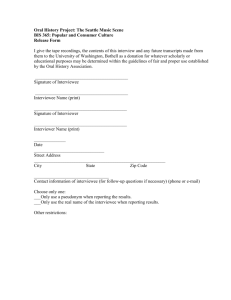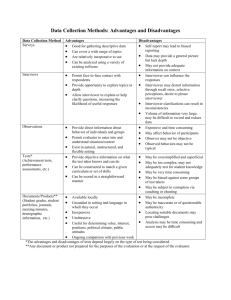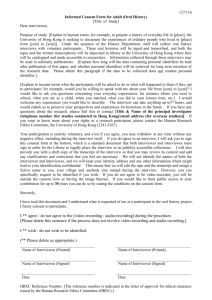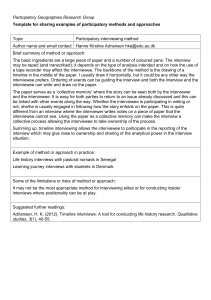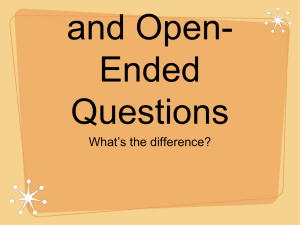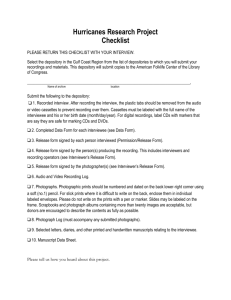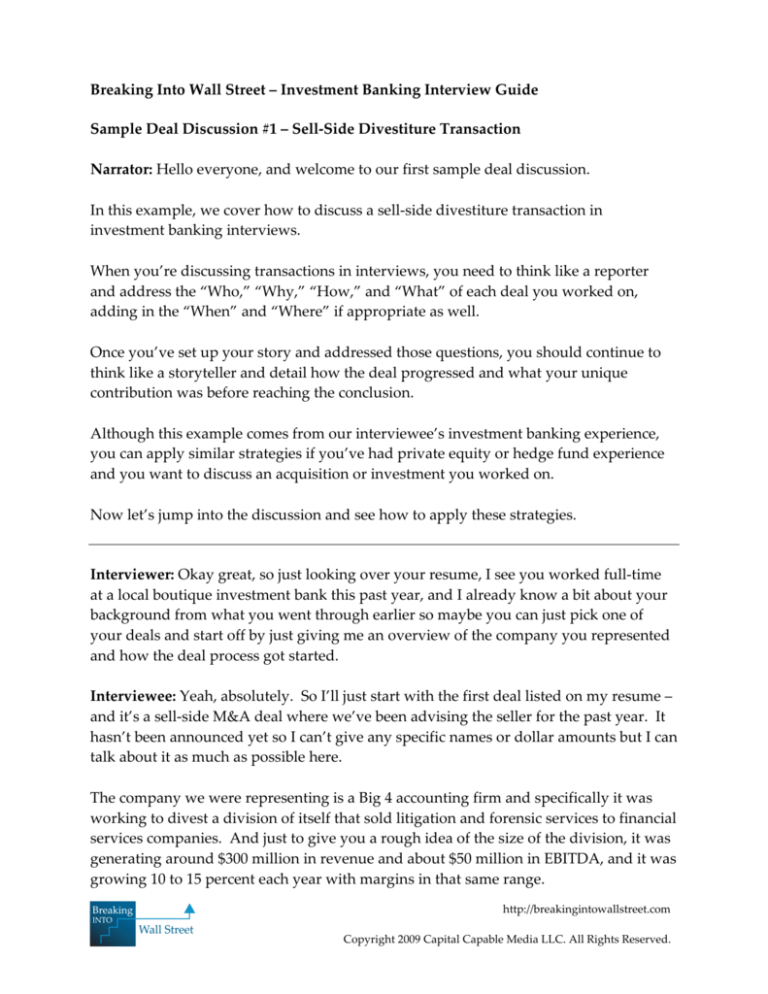
Breaking Into Wall Street – Investment Banking Interview Guide
Sample Deal Discussion #1 – Sell-Side Divestiture Transaction
Narrator: Hello everyone, and welcome to our first sample deal discussion.
In this example, we cover how to discuss a sell-side divestiture transaction in
investment banking interviews.
When you’re discussing transactions in interviews, you need to think like a reporter
and address the “Who,” “Why,” “How,” and “What” of each deal you worked on,
adding in the “When” and “Where” if appropriate as well.
Once you’ve set up your story and addressed those questions, you should continue to
think like a storyteller and detail how the deal progressed and what your unique
contribution was before reaching the conclusion.
Although this example comes from our interviewee’s investment banking experience,
you can apply similar strategies if you’ve had private equity or hedge fund experience
and you want to discuss an acquisition or investment you worked on.
Now let’s jump into the discussion and see how to apply these strategies.
Interviewer: Okay great, so just looking over your resume, I see you worked full-time
at a local boutique investment bank this past year, and I already know a bit about your
background from what you went through earlier so maybe you can just pick one of
your deals and start off by just giving me an overview of the company you represented
and how the deal process got started.
Interviewee: Yeah, absolutely. So I’ll just start with the first deal listed on my resume –
and it’s a sell-side M&A deal where we’ve been advising the seller for the past year. It
hasn’t been announced yet so I can’t give any specific names or dollar amounts but I can
talk about it as much as possible here.
The company we were representing is a Big 4 accounting firm and specifically it was
working to divest a division of itself that sold litigation and forensic services to financial
services companies. And just to give you a rough idea of the size of the division, it was
generating around $300 million in revenue and about $50 million in EBITDA, and it was
growing 10 to 15 percent each year with margins in that same range.
http://breakingintowallstreet.com
Copyright 2009 Capital Capable Media LLC. All Rights Reserved.
The business itself was going through a shift, from this services focus to providing more
web-based type software that automated the process and allowed clients to solve their
problems remotely, which really boosted their revenues.
Interviewer: Okay, sounds like a pretty promising business. It’s not a huge company
yet but pretty substantial revenue, pretty good growth, so why would this accounting
firm want to divest a promising, growing division like this?
Interviewee: Well, we were originally engaged for two reasons, and one was that
basically as the business expanded beyond the services focus it wasn’t really in the
accounting firm’s core area of expertise and they became uncertain of how to deal with
regulatory issues surrounding the business, especially since it often created conflicts of
interest.
And the other primary reason was the inbound interest the firm would receive from
these legal software and content management companies, and they quoted a very
attractive potential purchase price to our client – and we were engaged just to see if we
could generate interest from anyone else to get a higher price.
Interviewer: Okay good, so it sounds like the business was growing beyond the parent
company’s expertise and they wanted to see if you could get a more attractive price
than what the original inbound interest had generated. So what kind of sell-side
process did you run in response to this?
Interviewee: Well, we started pretty broad and we approached over 50 firms, both
strategic and financial – and a lot of the private equity firms specialized in divestitures
and turning under-served division of companies into these strong stand-alone entities.
So we didn’t really want to overlook that possibility at all – but since the company’s
business was attractive to a lot of technology and legal companies we also wanted to see
what kind of interest we could get from that group of buyers as well.
Interviewer: Right, yeah, that definitely makes sense. We’ll almost always go to both
financial and strategic buyers, unless we’re working with some high-growth startup or
something else risky along those lines. So when you were going through and making
the marketing materials and everything else, what were the major selling points of this
software division?
http://breakingintowallstreet.com
Copyright 2009 Capital Capable Media LLC. All Rights Reserved.
Interviewee: Well, I think a lot of our pitch was really focused on the strong profile
going forward, since the company was changing from this labor-intensive services
company to a much higher-margin, recurring revenue model with subscription
software – we thought it would look a lot more attractive in coming years.
But beyond that there was also the favorable market, a huge rise in the number of legal
incidents that required really advanced software, particularly since Sarbanes-Oxley and
other similar legislation.
And the management team was also quite capable so that was another point we tried to
highlight. They had a proven track record at similar companies, they were all itching to
start their own thing and take an equity stake in the new entity so that was really
attractive to financial sponsors.
Interviewer: Okay great, and just looking at the business from your point of view, what
do you think the potential weaknesses were? So, anything that might concern potential
buyers or maybe even anything that some of the buyers kept asking you guys about
when you were going through the sell-side process.
Interviewee: Yeah, I think one of the biggest problems for the financial sponsors was
the high cost of setting up infrastructure and the administration to operate as its own
independent entity. I mean, they liked everything else about the company but that
point alone caused a lot of difficulty down the road.
And on the strategic buyer side, they were really concerned as to whether or not the
company can make a transaction from being a services company to a true software
company. For 10 years, it was exclusively services-based, so they were pretty skeptical
as to whether they could effectively switch at a moment’s notice.
And since the company’s customers were mostly in financial services, many of the
buyers were concerned about how stable the revenue would be in light of the recent
market turmoil as well.
Interviewer: Okay great, and so as the deal was progressing and you were going and
contacting all the buyers and everything, what was the process? Can you maybe walk
me through who was interested and who ultimately ended up being the most interested
in this company?
Interviewee: Yeah, absolutely. We got a lot of interest from basically around 10
potential buyers and then we narrowed that list down, mostly based on purchase price
http://breakingintowallstreet.com
Copyright 2009 Capital Capable Media LLC. All Rights Reserved.
after a few rounds of bidding. We had a strategic buyer and a financial sponsor who
were both willing to pay approximately $400 million.
The strategic was more likely to stick to that price, but the financial sponsor could move
more quickly and get the deal done faster. So to make sure we got a deal done, we
continued discussions and negotiations with both buyers and distributed Asset
Purchase Agreements to both.
Interviewer: Okay, great, so you have a both strategic and a financial sponsor who say
they’re going to pay about the same amount, and sounds like you were negotiating the
Purchase Agreements with both of them at the same time, so who ultimately came out
as the winner here? Did one of them come up with a better price or come up with better
terms in some way?
Interviewee: Yeah, so the strategic got really hung up on some intellectual property
issues as we went down the path of due diligence.
Now, I’m not a lawyer but I did a bit of research on some of the patents they were
concerned with and connected the lawyers on both sides to discuss it. Unfortunately
they were still thinking over the issues by the time I had to leave.
Meanwhile the financial sponsor didn’t care as much about that deal point but they
were concerned about how much the company would cost to operate as a stand-alone
entity – so they did their own calculations on the company’s stand-alone operating
expenses, which came out to be much higher than what we were suggesting.
Interviewer: Okay good, and so did you move forward with them or did the
disagreement over the expenses stop the deal from happening?
Interviewee: Well, I worked with the division’s finance manager to create our own
bottoms-up expense model for the company and see what it would really cost. And we
found that the PE firm was really conservative in a few cases, and our expenses were
around 10% lower than what they had suggested.
Interviewer: Okay good, so you mentioned that you made this bottoms-up expense
model, so maybe could you go into a little bit of detail over what you actually did
there?
http://breakingintowallstreet.com
Copyright 2009 Capital Capable Media LLC. All Rights Reserved.
Interviewee: Yeah sure, so we started with the basics – just employee salaries, bonus
payments, and option expenses for the stand-alone company – and then added in
around 15% overhead to account for the infrastructure.
For the next step, I started to research the cost of office locations in major cities they
were operating in, and then figured in the rent, insurance and other payments in the
model. And we also added the costs of renting technologies such as computers and also
purchasing other software.
So finally we looked at the cost of hiring a management team based on the quotes given
to us from some executive headhunters and added that in as well.
Interviewer: Okay great, so the private equity firm has their version of the expenses
and then you have your own version of the expenses – so how did they react to this?
Did they move at all on the price or anything?
Interviewee: Well, obviously they thought we were being far too conservative with our
estimate. However they were willing to settle with us and agree to an EBITDA number
that was around 5 percent higher than what they initially calculated for the stand-alone
figure. So that actually affected the purchase price by quite a bit since they based it on a
multiple of EBITDA. But they were still willing to move forward when the strategic
was stalled.
Interviewer: Okay great, so by the time you left what was the status of the deal?
Interviewee: It was still up in the air and we were in final negotiations with the
financial sponsor. Nothing has been announced yet, so I’m assuming they’ve probably
hit some delays on the way to the finish line.
Interviewer: Yeah, you know that’s pretty typical – I think M&A deals almost always
fall apart right near the end and then they either stay dead or they somehow come back
to life right after that. So thanks for the overview, that was pretty insightful – sounds
like you’ve had some great experience there working at the boutique.
http://breakingintowallstreet.com
Copyright 2009 Capital Capable Media LLC. All Rights Reserved.

